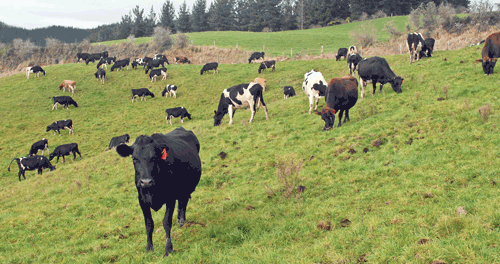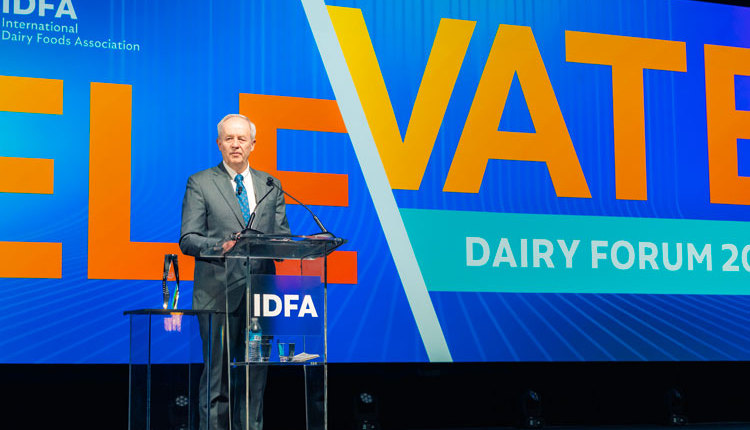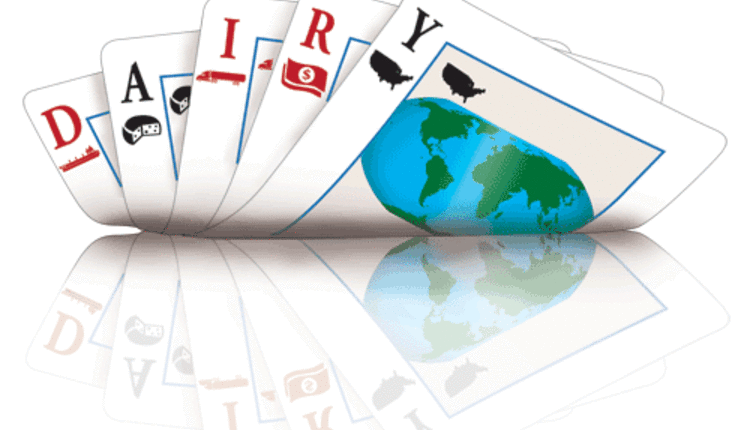
According to the U.S. Dairy Export Council (USDEC), exports accounted for 13.3 percent of total milk solids produced in the U.S. in 2011. Figures reported at the 2012 Minnesota-Wisconsin Dairy Policy Conference show that exports added $2 to $4 per hundredweight to U.S. producers' milk checks in recent years. If American dairy farm and industry incomes are to grow over the longer run, then presumably exports will need to continue to expand.
USDEC saw it coming
The U.S. industry's growing dependency on foreign markets has unfolded much as Tom Suber, then president of USDEC, predicted more than a dozen years ago. Suber described the future of the U.S. dairy industry at a 1999 conference as one where real costs of milk production are declining, domestic demand is growing modestly and the role of government is declining. He argued that, in this environment, ". . . we compete internationally or we shrink as an industry."
Fonterra Cooperative Group, Ltd., of New Zealand and its predecessors have long needed to be competitive dairy exporters and foreign direct investors in order to stay in business. The firms became proficient at selling in foreign markets because New Zealand's small domestic market (about 4.4 million people in 2011) cannot absorb more than 5 to 10 percent of the country's production. Also, New Zealand has no government dairy price support program. Hence, New Zealand's dairy industry must sell dairy products in international markets or shrink.
Fonterra, now the world's largest milk processor, was the dominant survivor of a massive consolidation of New Zealand's dairy processing industry which included 168 dairy processing companies four decades earlier in 1961. The cooperative recorded revenues of NZ$19.9 billion (U.S.$16.5 billion) in 2011. Before merging with Fonterra in 2001, the New Zealand Dairy Board (NZDB) was the single-desk (monopoly) exporter for New Zealand dairy products. New Zealand's parliament stripped the monopoly exporting privilege from the merged organization.
Value-added changed New Zealand
A strategic turning point for New Zealand's dairy industry occurred in 1989 when NZDB officials announced the industry would seek to grow the 30 to 40 percent of products sold as value-added (differentiated) to 100 percent as rapidly as possible.
Producers of differentiated products need not compete exclusively on the basis of price and can survive without being a low-cost producer. But rapid expansion of New Zealand's milk production (production more than doubled from the early 1990s to 2011) made it impossible for the country to meet this goal. But by getting part way to the target (by one measure to about 57 percent of the total in 2010) carried economic benefits.
The payoffs of being a low-cost producer and a value-added manufacturer and exporter are additive. If U.S. dairy exporters can superimpose a product differentiation strategy on top of being a low-cost producer, it would help to make them formidable international competitors.
New Zealand's processor-exporters initially achieved low costs mainly by gaining access to low-cost milk produced on New Zealand's pasture-based farms. Higher fertilizer and other input prices have since raised farm milk production costs. New Zealand's milk production costs also have risen in recent years because higher returns from dairy exports have been capitalized into higher farmland prices. This run-up in farmland prices probably will reduce New Zealand's competitiveness in international dairy markets over the longer run.
In recent years, Fonterra reduced processing costs by constructing some of the world's largest milk powder processing plants. For example, Fonterra claims that Drier 4 at its Edendale plant in Southland is the most efficient milk powder processing plant in the world. Fonterra reports Drier 4's operating costs are 30 percent below the cooperative's older nearby milk powder processing plants.
Fonterra also maintains milk production and processing facilities in foreign countries to supplement the New Zealand-based production. This action permits the cooperative to function as a reliable supplier for foreign customers when droughts or other developments curtail New Zealand's milk production. Global sourcing and processing also permits Fonterra to serve markets restricted by tariff and nontariff barriers. In 2010, Fonterra's sourced milk in Australia, the U.S., South America, Sri Lanka, Thailand and China was equivalent to nearly 50 percent of New Zealand's domestic milk production.
New Zealanders have long acquired foreign companies to serve as distribution or processing companies for their products. Frequently, the NZDB used a sequential risk control process to acquire the foreign companies. First, the NZDB worked through an agent to make sales in a foreign country. Next, the agent and NZDB might form a joint venture company to expand sales. Finally, if the risks and rewards looked appropriate, the NZDB would acquire the joint venture business. The sequential process permitted the NZDB to experiment with working relationships and markets before acquiring major equity interests in foreign companies. Expansion-minded U.S. exporters and foreign direct investors wanting to develop similar strategies will need to expedite the process to avoid being a late mover.
The NZDB identified early mover advantages in dairy exporting in the mid-1990s. A NZDB official reported that initial entrants into a market gain, on average, a 15 percent advantage over second entrants. Third-place entrants into a given market tend to break even. Entering fourth or later is a strategy for losing money.
It was not all positive
One of Fonterra's biggest missteps occurred in connection with the firm's acquisition of a 43 percent equity interest in San Lu Dairy in China in 2006. Fonterra's experience with joint ventures and alliances in foreign countries should have produced a profitable partnership.
But, San Lu Dairy, a major producer of infant formula, became embroiled in the 2008 melamine milk poisoning scandal in China that killed six children and sickened up to 300,000 other people. Fonterra came under scathing criticism when San Lu's infant formula was found to be contaminated with melamine. San Lu Dairy ultimately went bankrupt. Fonterra found it necessary to take a NZ$139 million (U.S.$95 million) financial impairment charge as a result of problems at San Lu Dairy.
Fonterra's experience with San Lu Dairy reminds U.S. dairy companies that even big international players find China is a difficult place to do business.








